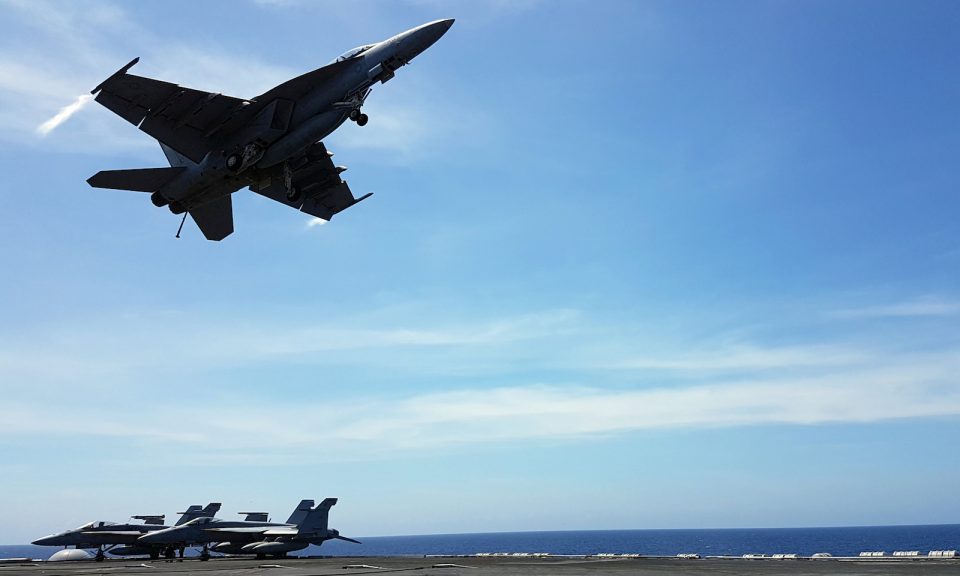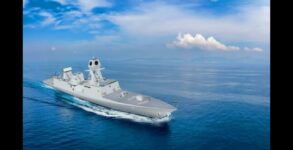In the face of challenges from China in the Indian Ocean, especially in the Bay of Bengal, India has started ramping up its strategy as well as defence preparedness. And this is what signing of $500 million deal between India and Russia on November 20 indicates. Under the deal two stealth frigates will be built in Goa, expected to be delivered by 2027. This deal has come close on the heels of India and Russia inking an agreement for the purchase of two similar kinds of warships to be delivered to the Indian Navy by 2022-23. These frigates, as per Defence Ministry officials, will be armed with the BrahMos supersonic cruise missiles and other weaponry systems, including sensors.
A few days ago, India released Letter of Request (LoR) to the US for the purchase of 24 MH-60 R helicopters for Navy. But India sent powerful message to the world, especially China when on November 5, the country’s first indigenous nuclear submarine INS Arihant completed its maiden deterrence patrol.
These moves reflect India’s readiness to take on any challenges from its adversaries in the Indian Ocean, which is virtually the country’s backyard. China’s planned building of a deep sea port in Kyaukpyu, a Myanmar town which is situated on Arakan coast in the Bay of Bengal, has created ripples in the fast changing geo-political situation of the region. After Hambantota port, which China has taken over from Sri Lanka on 99 years lease in exchange for $1.8 billion loan, Kyaukpyu would be the second China-built port in the Bay of Bengal, rather third in the region around India if Pakistan’s Gwadar port which is situated on the Arabian sea is taken into account. China is also funding the development of deep sea port in Chittagong in Bangladesh.
Seen as a part of Beijing’s strategic design against India, these sea ports’ development aims at encircling India and choking its reach in the Indian Ocean which is New Delhi’s backyard. China’s move to build deep sea port in Kyaukpyu is not a new development. China has been pursuing Kyaukpyu port agenda with the Myanmar government since 2008-09. Under the military administration, Beijing managed to increase as much as 85 per cent stake in the project. But due to protests and anti-China sentiments, the project could not take off. After the 2015 elections when Aung San Suu Kyi-led National League for Democracy (NLD) came to power, things started changing. In October 2017, China’s CITIC agreed to reduce the stake to 70 per cent and also the total project cost of the proposed port from $7.3 billion to just $1.3 billion. And this is there in the framework agreement, signed between the two sides on November 8 shows.
Trump’s refusal to become chief guest at R-day function may hurt India-US relations
But India is now not a sleeping elephant. This year in May, India and Indonesia agreed for naval access to Sabang, a strategically located island which is close to the Malacca Strait. To make docking for submarines, warships like destroyers, frigates and cruisers or warships a smooth affair at Sabang, both India and Indonesia have agreed to pitch in their fund for developing it into a deep sea port. In the second week of July, a team of senior Indian government officials visited Indonesia to explore planned development of infrastructure at Sabang port and planned sea linkage of India’s Andaman-Nicobar with Indonesia’s Sumatra Island; distance between the two sides is just 710-km (90 nautical miles). At Sabang, India will also develop special economic zone and a hospital. According to sources,
Significantly, Andaman-Nicobar Island is only around 498 km from the Malacca Strait, one of six choke points in the Indian Ocean and very important sea lane for global energy transport. Almost 40 per cent of India’s trade passes through the Malacca Strait. Just last week from November 12-18, Indian Navy and Indonesian Navy completed their inaugural exercise called ‘Samudra Shakti’ near the port of Surabaya. Considered as the fulcrum of India’s Indo-Pacific strategy, the Bay of Bengal has lately received heightened India focus with Andaman-Nicobar Island and Lakshadweep to be converted into a maritime hub. In this regard, India invited potential investors for a meeting in the second week of August in New Delhi where around dozens of investors from the US, Europe, Japan and other countries participated. New Delhi is about to float a global tender for the development of maritime hub, road, air, sea link in Andaman-Nicobar and Lakshadweep.
India France Relations: Natural and Real
In Lakshadeep, which falls in Arabian Sea, India already has maintained permanent naval facility in Kavaratti Island since the 1980s. It was further developed into INS Dweeprakshak, a naval base of Southern Naval Command in April, 2012. With India developing an airstrip, jetty facilities in Mauritius’ Agalega Islands where state-of-the art telecommunication equipment will be also put up, Kavaratti will be turned into a significant naval base of maritime co-operation with littoral states of the Indian Ocean Region. Maldives will be part of maritime co-operation in the IoR.
After the Abdulla Yameen government from Maldives gone and Mohamed Solih becoming the new President of the island nation, India hopes to regain its strategic foothold in the country of atolls and islands. Prime Minister Narendra Modi’s visit to the island country to attend swearing-in ceremony of Mohamed Solih, hinted in clear terms India’s determination to reset all economic and strategic goalposts in favour of New Delhi.
In Singapore, situated on the bank of Strait of Malacca—a 890 km stretch of water between Peninsular Malaysia and the Indonesia’s Sumatra Island and tipping point of Bay of Bengal —India has got an excess for its naval ships to Changi naval base which is located near the contentious South China Sea. Indian and Singaporean navies concluded their 25th joint naval exercise from November 10 to 21.
As India becomes wealthier, more Indians leave its shores
Further strengthening its strategic arrangement in the Bay of Bengal, India built Sittwe Port of Myanmar, a deep sea port of high tactical value, is on the verge of operationalization. After Foreign Secretary Vijay Gokhale’s visit to Myanmar on October 22, New Delhi and Nay Pyi Taw signed MoU for an appointment of a private operator of Sittwe Port which is part of the ambitious Kaladan Multi Model Transit Transport Project. India has invested $1.75 billion on the project which will connect the country’s Northeastern region to the Bay of Bengal through Mizoram. Since President Ram Nath Kovind will be visiting Myanmar on December 11-12 to handover Sittwe Port officially to the Myanmar government, a team of Myanmar’s officials headed by Union Minister of Transport and Communications U Thant Sin Maung was recently in New Delhi to talk to Indian officials about nitty-gritty of the operationalization of Sittwe Port.
Despite China’s aggressive move to give wings to its Belt and Road Initiative by pumping in huge money to build sea ports, ports, roads, bridges and other infrastructure in the countries surrounding India, Southeast Asia, Central Asia, Europe and Pacific awakened New Delhi has lost no moment to beat China in its own game. China has already seen it in Sri Lanka and Maldives. Amid this, by purchasing war ships from Russia and powerful sea hawk helicopters from the US, India has strongly indicated that its preeminence as a regional power can’t be lost in the maze of China’s game plan in South Asia and Southeast Asia.


















